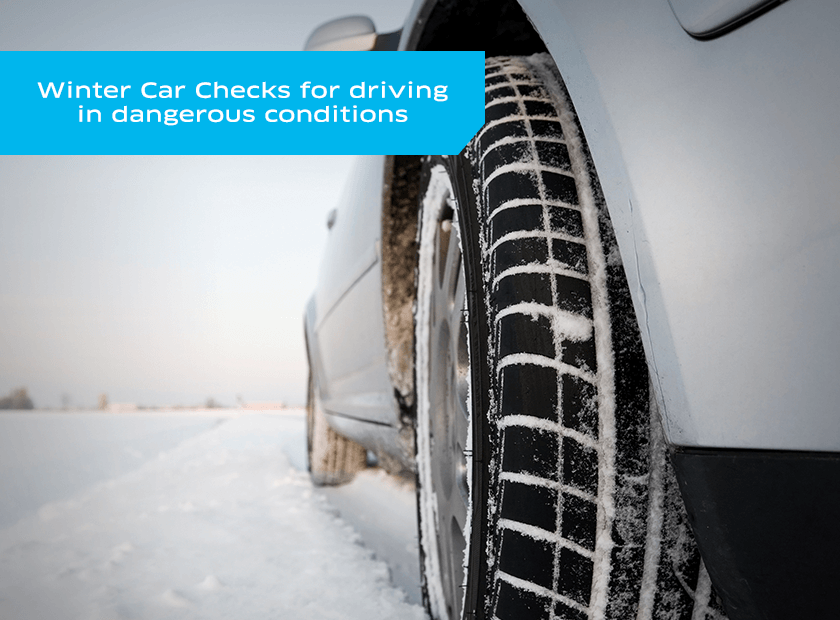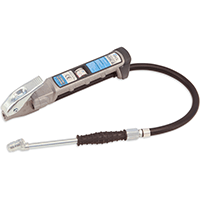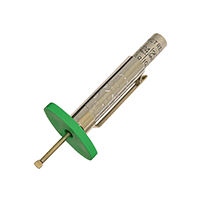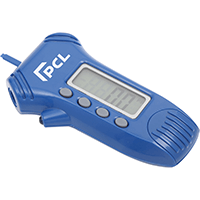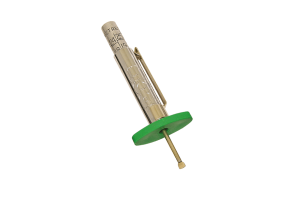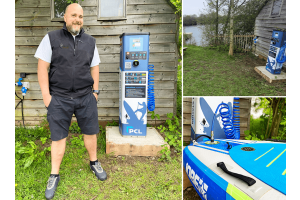Winter Car Safety Checks for driving in dangerous conditions
During Winter it’s important to make sure your car is prepared for every situation. Here are our 10 winter car safety checks that you should consider before setting off into the ice and snow.
1. Check your tyres
Under-inflated or over-inflated tyres, and tyres with a low tread depth affect handling and grip, potentially causing irregular or unpredictable vehicle behaviour, but throw heavy rain, snow or ice into the mix and the results can be lethal.
Checking your tyres before setting off using reliable and accurate tyre gauges can help keep you safe on the road and on the right side of the law.
Tyre checks should include:
- Checking the tread depth meets the legal minimum depth
View our Tyre Tread Depth guide and videos to find out more. - Checking the tyre pressure meets vehicle manufactures’ recommendations
View our Tyre Pressure guide and videos to find out more. - Checking the overall condition
Examine the tyres for any cuts or bulges which must be assessed by a professional if found.
PCL equipment to keep tyres safe and legal

2. Brakes
Make sure to check that your brakes are fully functional in wintery conditions before setting.
When driving, remember to keep your distance from the road user in front as stopping distances on wet roads can be ten times greater than on dry roads (Highway Code, 2022).
Incorrectly inflated or low tread tyres can also affect braking distance. According to research carried out by the British Tyre Manufacturers’ Association, braking distance in wet weather of a tyre with only 1.6mm of tread depth is almost 12m longer than a new tyre from 50mph (TyreSafe, 2022). Another reason to make sure to check your tyres as well as your brake before you set off!

3. Defrost your car and make sure the windscreen is clear!
It is essential to clear your entire windscreen of snow, ice and mist, as well as your mirrors. Not only will help keep you and others safe by having full vision of the road, but help avoid a fine and points on your license.
Keep an ice scraper in your car and make sure car heaters and defrosters are fully functional.
Remember to also check the wiper blades and replace if worn and top up your windscreen wash.

4. Top up your engine coolant with antifreeze
This is essential for when temperatures plummet below freezing, but make sure you get the mix right. Aim for 50/50 spilt between water and antifreeze.

5. Keep emergency kit in your car
Should you get stuck in snow or breakdown, it’s important to keep an emergency kit in your car, this should consist of:
- A shovel in case you get stuck in the snow
- Torch with spare batteries
- Blanket (No car power means no heat)
- Map or sat nav
- Fully charged mobile with charger and cable
- Food and drink supplies

6. Fuel
Keep an eye on your fuel gauge and ensure you keep your car topped up before making any long journeys or before driving at night.

7. Battery
Ensure battery is regularly checked throughout winter as it is more susceptible to issues during the colder months. Carry a set of jump leads in your car in case of battery problems.

8. Lights
Regularly check that your interior and exterior car lights are fully functional. When driving make sure that you are using the correct lights for the conditions.

9. Oil levels
Ensure that your engine has the correct level of engine oil and top up if needed.

10. Plan your route
For long distance travel, plan your route ahead of time. Check the weather forecast and traffic conditions in advance as well as on the day of travel. For any unexpected events at your journey, have an alternate route planned.

